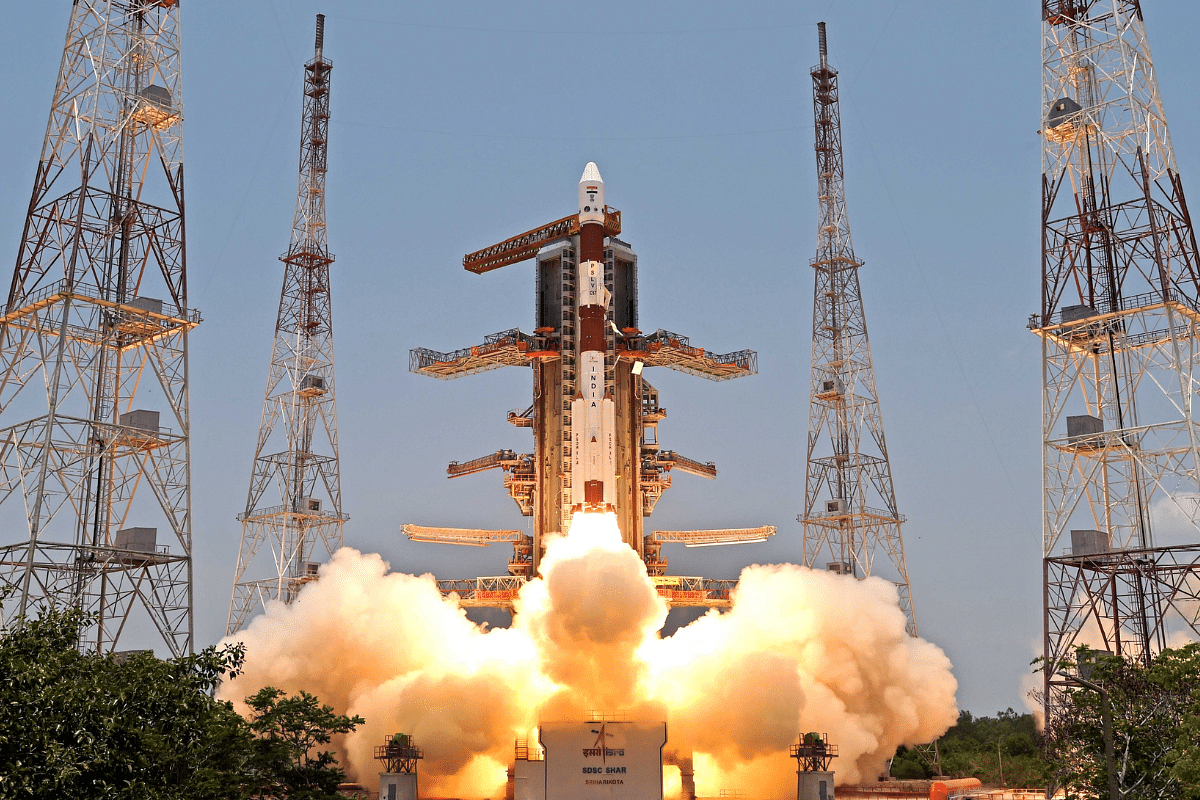Science
ISRO Adopts "Unique Mission Mode" For The PSLV To Launch Aditya-L1 Into Earth Orbit
- The ISRO chief congratulated the team for "such a very different mission approach today to do this mission of Aditya-L1."

PSLV-C57 launches with Aditya-L1 on board
India's solar observatory Aditya-L1 was injected precisely in an elliptical orbit of 235 km x 19,500 km, as planned, about 63 minutes into the 11.50 am launch Saturday (2 September).
In more good news soon after, the solar panels on Aditya-L1 were deployed and the spacecraft started generating power.
Notably, the Indian Space Research Organisation (ISRO) adopted a "unique mission mode" with its polar satellite launch vehicle (PSLV) to inject the Aditya-L1 satellite in orbit.
"...Very unique mission mode here, with the upper stage of the PSLV taking two-burn sequence for injecting the primary satellite for the first time," ISRO Chairman S Somanath said at the Satish Dhawan Space Centre, Sriharikota (SDSC SHAR), soon after the successful satellite separation.
The ISRO chief congratulated the team for "such a very different mission approach today to do this mission of Aditya-L1."
"Indeed it was very challenging," said Biju S R, the Mission Director.
"To meet the orbital requirements, we have gone for a new mission design strategy. We have gone through numerous simulations to validate this, and that is the proof that you're having now," he said.
"With this, our capability of PSLV has increased manifold to venture into new and challenging missions," Biju added.
The Aditya-L1 mission was the 59th flight of the PSLV and the 25th mission using the PSLV-XL configuration.
With the PSLV's work done, it's a roughly 125-day journey to Aditya-L1's destination of Lagrange point 1 (L1) of the Sun-Earth system here on out.
L1 is a gravitational sweet spot between the Earth and the Sun located 15 lakh kilometres away (L1 explained here).
"Aditya-L1 has started its 125 days of long journey towards L1. We have our Earth burns to raise the orbit, followed by the trans-L1 injection, and finally insertion into the halo orbit in the Sun-Earth Lagrange point L1," Nigar Shaji, Aditya-L1 project director, said.
The first Earth-bound firing to raise the orbit is set to take place at around 11:45 am, India time, on Sunday (3 September).
Aditya-L1 is slated to stay in Earth-bound orbits for 16 days, until about 18 September.
During this phase, the spacecraft will take on increasingly elliptical orbits with the help of five manoeuvres.
This series of steps — or "burns" — starting Sunday will help Aditya-L1 to achieve the velocity necessary for a kick off to L1, located about 15 lakh kilometres from Earth.
Thereafter, the journey from the final Earth orbit to the vicinity of L1 is estimated to take 110 days.
In this stage of the flight, Aditya-L1 will exit the Earth's gravitational sphere of influence and enter a cruise phase.
Thereafter, ISRO will execute a manoeuvre to bind Aditya-L1 to an orbit around L1.
The liquid apogee motor (LAM) will be key to executing the various orbital manoeuvres.
"Once the Aditya is commissioned, it will be an asset to the heliophysics of the country and even to the global scientific fraternity," Shaji said.
Support Swarajya's 50 Ground Reports Project & Sponsor A Story
Every general election Swarajya does a 50 ground reports project.
Aimed only at serious readers and those who appreciate the nuances of political undercurrents, the project provides a sense of India's electoral landscape. As you know, these reports are produced after considerable investment of travel, time and effort on the ground.
This time too we've kicked off the project in style and have covered over 30 constituencies already. If you're someone who appreciates such work and have enjoyed our coverage please consider sponsoring a ground report for just Rs 2999 to Rs 19,999 - it goes a long way in helping us produce more quality reportage.
You can also back this project by becoming a subscriber for as little as Rs 999 - so do click on this links and choose a plan that suits you and back us.
Click below to contribute.
Latest